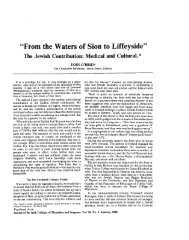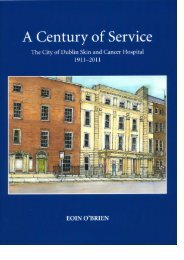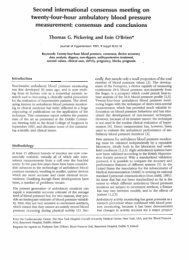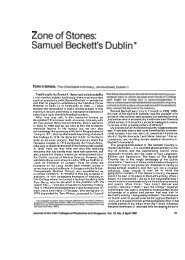Nevill Johnson: Paint the smell of grass - Eoin O'Brien
Nevill Johnson: Paint the smell of grass - Eoin O'Brien
Nevill Johnson: Paint the smell of grass - Eoin O'Brien
Create successful ePaper yourself
Turn your PDF publications into a flip-book with our unique Google optimized e-Paper software.
church; <strong>Johnson</strong>’s wandering priests and nuns are strange images, unworldly, surreal, slightly<br />
mocked yet always subtly powerful.<br />
In this world <strong>Johnson</strong> must have been an equally confusing figure. His sympathies clearly lay<br />
with <strong>the</strong> subjects <strong>of</strong> his photographs, yet he was by upbringing, bearing and accent a figure <strong>of</strong> <strong>the</strong><br />
establishment; even worse, <strong>the</strong> British establishment. However he explained <strong>the</strong> presence <strong>of</strong><br />
himself, his Leica (purchased with a grant from <strong>the</strong> Arts Council) and his assistant, Anne Yeats, it<br />
is clear from <strong>the</strong> photographs that he must have calmed any concerns and perhaps even began to<br />
fade into <strong>the</strong> background and record an unselfconscious life going on around him. The notebook<br />
exists in which he divided <strong>the</strong> city in a grid and <strong>the</strong>n noted <strong>the</strong> route and <strong>the</strong> photographs he had<br />
taken according to this grid.<br />
A lot <strong>of</strong> <strong>the</strong>se photographs are <strong>of</strong> children, at ease and showing <strong>of</strong>f, intrigued by <strong>the</strong> stranger,<br />
playing in groups and unaware <strong>of</strong> being watched. They are sometimes dominated by <strong>the</strong>ir<br />
surroundings, more <strong>of</strong>ten in control <strong>of</strong> <strong>the</strong> familiar streets that form <strong>the</strong>ir playground. The grime and<br />
decay <strong>of</strong> <strong>the</strong>ir surroundings adds a layer <strong>of</strong> pathos beneath <strong>the</strong> energy, confidence and enthusiasm <strong>of</strong><br />
childhood. One image <strong>of</strong> a girl and her even younger bro<strong>the</strong>r on <strong>the</strong> steps <strong>of</strong> a gaunt Georgian<br />
doorway that gapes behind <strong>the</strong>m suggests <strong>the</strong> inescapable poverty that will swallow <strong>the</strong>m up.<br />
Graham Greene, from a similar generation and background as <strong>Johnson</strong>, visited Dublin in<br />
1923, wrote “It is <strong>the</strong> poverty and expensiveness <strong>of</strong> Dublin that first impress visitors. The houses<br />
are dilapidated, <strong>the</strong> roads unswept…But <strong>the</strong> most impressive thing about Dublin is its expectant<br />
but apa<strong>the</strong>tic air. Everyone is idle but waiting.” 2<br />
Many <strong>of</strong> <strong>the</strong> adults he photographed cannot be seen outside <strong>the</strong> context <strong>of</strong> this cycle <strong>of</strong><br />
poverty, yet <strong>Johnson</strong> always evokes <strong>the</strong> “maverick undertow” <strong>of</strong> <strong>the</strong> Dubliner, “buttressed by<br />
piety, capped and shod by wit and crafty indolence”. In <strong>the</strong> same way, despite <strong>the</strong> ruthless honesty<br />
in <strong>Johnson</strong>’s recording <strong>of</strong> <strong>the</strong> city, his own love <strong>of</strong> its visual appearance, its light and atmosphere<br />
is almost always <strong>the</strong>re.<br />
As with his paintings, <strong>Johnson</strong>’s social anger and his sense <strong>of</strong> humour co-exist within <strong>the</strong>se<br />
photographs. His eye is always struck by <strong>the</strong> surreal, particularly in junk shops or religious<br />
statuary, and by strange juxtapositions, such as <strong>the</strong> two gauntly black nuns like crows passing a<br />
boarded-up tobacconist’s shop watched by a curious group <strong>of</strong> seated girls and a ra<strong>the</strong>r dismissive<br />
pair <strong>of</strong> standing boys.<br />
Photographers such as Perry Ogden have commented on <strong>Johnson</strong>’s technical skill with his<br />
Leica, particularly as he does not seem to have had any experience as a photographer. It seems<br />
inexplicable that <strong>Johnson</strong> never returned to photography in any substantial way in <strong>the</strong> future.<br />
Little seems to have happened with <strong>the</strong>se photographs at <strong>the</strong> time, but a selection were eventually<br />
2 Graham Greene – ‘Impression <strong>of</strong> Dublin’, 1923, published in ‘Reflections’, ed. Judith Adamson, Penguin, London<br />
44 <strong>Nevill</strong> <strong>Johnson</strong> l <strong>Paint</strong> <strong>the</strong> Smell <strong>of</strong> Grass<br />
Two women, Parnell Street<br />
Lower Dommick Street<br />
<strong>Nevill</strong> <strong>Johnson</strong> l The Dublin years 1947–1958 45









